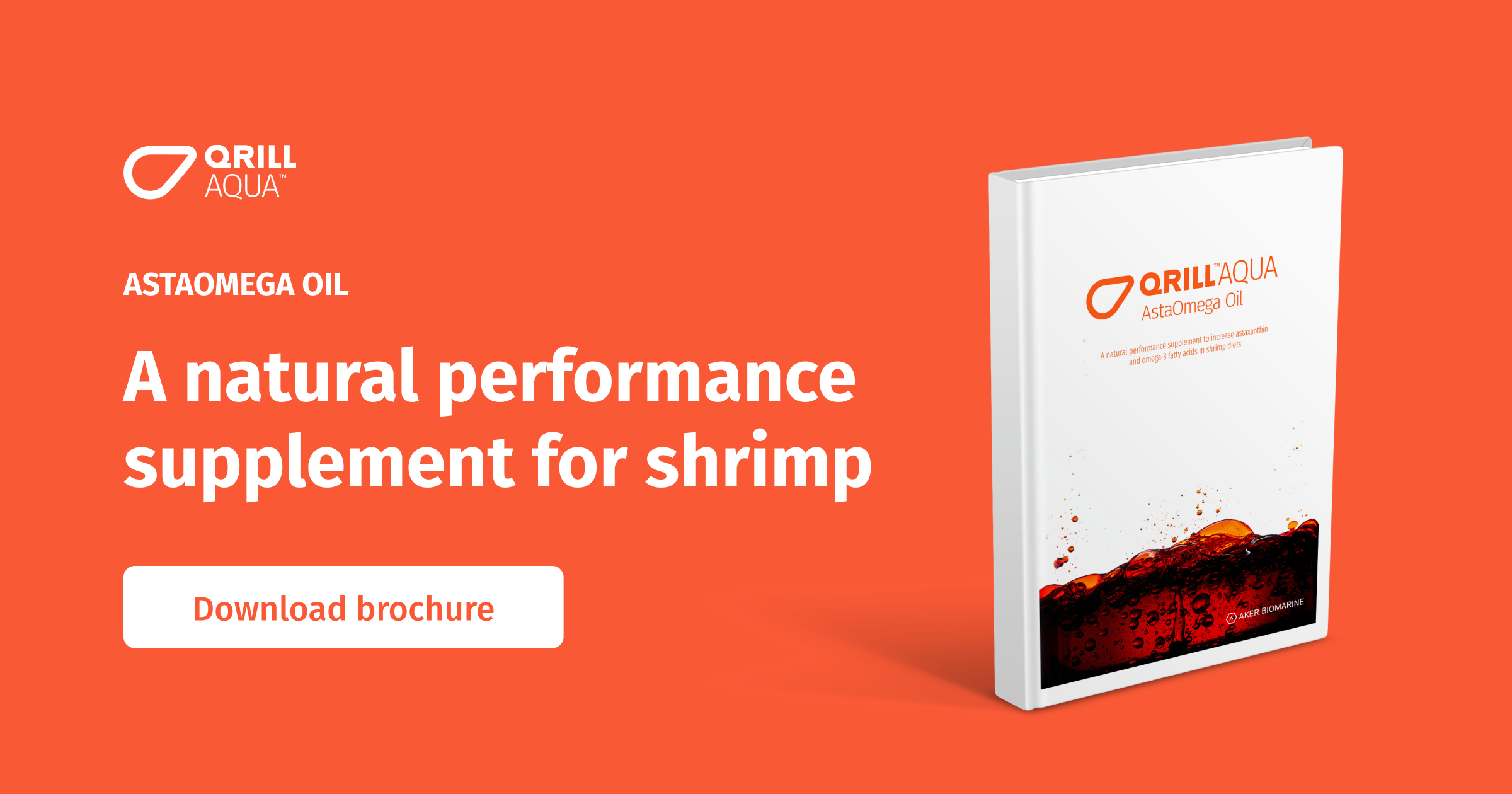Astaxanthin krill oil is a healthy and sustainable dietary supplement, appealing to shrimp farmers who seek a healthy stock and rapid animal growth.
Growth and survival of shrimp are key success factors for farmers, which is why time and effort is invested in researching the right supplement to add to the dietary feed. Shrimp raised in ponds, potentially high or fluctuating in saline levels, may be especially vulnerable in terms of their development, but the right performance supplement can make a significant positive impact.
Astaxanthin krill oil, made from sustainably harvested Antarctic krill, is positioned as an all-natural, specialty performance supplement, rich in omega-3 fatty acids, as well as the powerful antioxidant and colorant astaxanthin. It has proven benefits in all life stages of the shrimp. An interesting article was recently published in Hatchery Feed and Management explaining different research on novel feed ingredients enhancing shrimp performance. Below is some highlights.
Astaxanthin oil gives better survival in stressful conditions
Much research into astaxanthin krill oil and its impact on growth and overall health of Pacific whiteleg shrimp has been conducted by researchers at LABOMAR Instituto de Ciências do Mar, Brazil. While individual experiments have varied, the results have some key commonalities.
In a recent experiment, the shrimp were subjected to stressful conditions, with sudden changes to salinity levels. One was looking to find out if astaxanthin krill oil had an impact on the survival of the shrimp under these stressful conditions. The results showed that by adding a minimum of one percent krill oil to the dietary feed, the shrimp exhibited higher survival rates. By boosting the amount of krill oil to five percent, all shrimp survived after 30 minutes of exposure to the stressful conditions, and even yielded increased body weight at the end of the experiment.
Growth in shrimp despite high saline conditions
Another study investigated growth and yield in exposed and enclosed tanks. Results indicated that performance were significantly improved when a mix of astaxanthin oil and soybean oil was applied to the commercial grower feed. By adding a topcoat of one percent krill oil and two percent soybean oil, the shrimp showed solid gains in weight (at normal salinity levels/exposed tanks). However, under higher saline levels (enclosed tanks), the at least two percent astaxanthin krill oil plus one percent soybean oil was necessary to ensure the increased in weight.
Consumers seek favorable shrimp flavor and texture
Important sensory parameters for end-consumer like color, flavor and shrimp tail texture has also been studied. In 2018 one compared krill oil with soybean oil and fish oil. Adding krill oil to shrimp diets ensured better flavor and stronger color at only 5%. Scientists found that shrimp given the astaxanthin krill oil had significantly higher consumer preference for color and flavor than the two other oil groups.
Finally, shrimp fed astaxanthin krill oil or fish oil diets showed a higher percentage of EPA and DHA in the shrimp tail fatty acid profile at harvesting regardless of the salinity.
Read more: 7 reasons to include krill in shrimp feed
Red and powerful
AstaOmega Oil is packed with nutrients like omega-3, EPA, DHA, astaxanthin and cholesterol, which are especially essential during the early stages of shrimp development. Since shrimp cannot make omega-3s, astaxanthin, cholesterol or phospholipids by themselves, the nutrients must be added to the diet.
AstaOmega naturally contain these nutrients, thereby delivering scientifically proven benefits for health, growth, taste and color Scientists speculate that the combination and the chemical form of these nutrients in the oil may be the reason behind its research-backed, positive effects on shrimp development. In addition, the oil has a characteristic smell that attracts shrimp, stimulating them to eat more. It can be used by feed manufacturers in recipes for feed or by farmers top coating dry feed or mixing with fresh feed.
